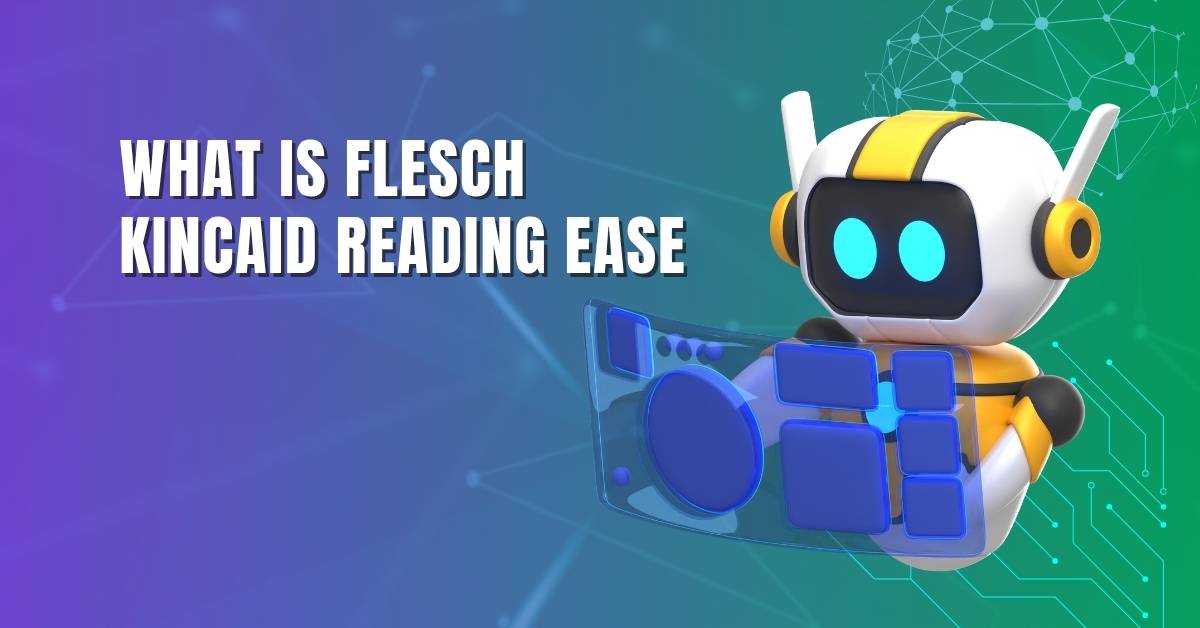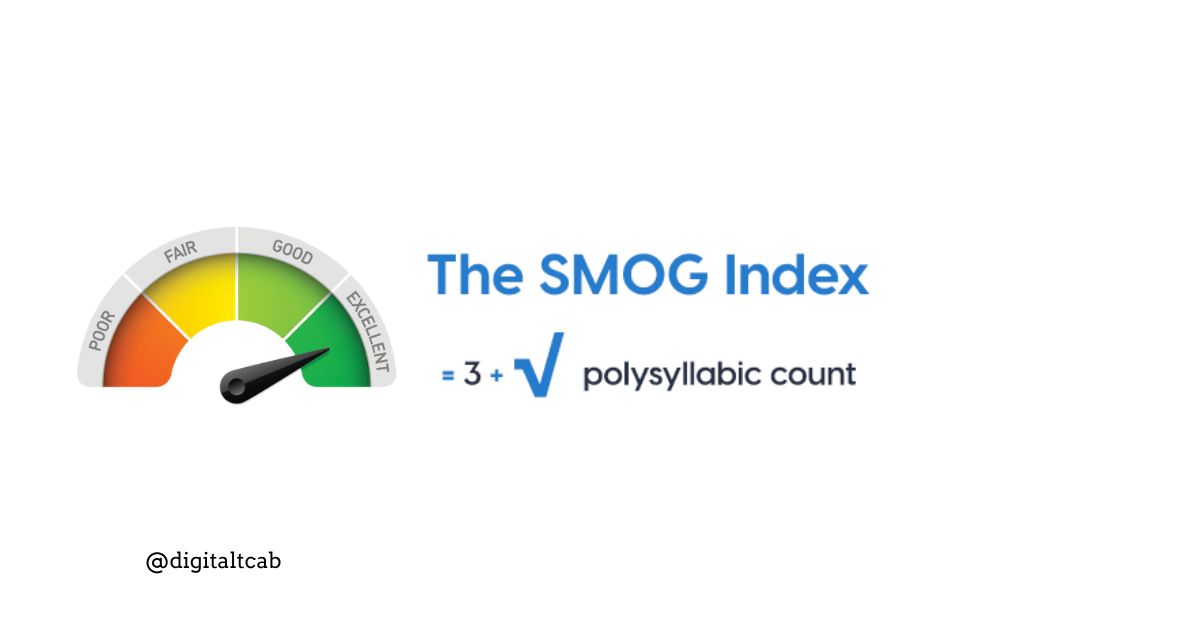I used to write long, elegant paragraphs with fancy words until I realized most people skipped them. That’s when I met the Flesch-Kincaid Reading Ease score. It’s not just a formula; it’s a reality check. If your content feels heavy, this score will tell you. And trust me, mine did.
Let me explain this score, how I use it in real SaaS content, and how you can check yours (yes, even in Word). If you’ve ever worried your writing might be too much, this post is for you.
Table of Contents
Here’s what I’ll cover:
- What the Flesch Reading Ease score means
- How the formula works without the math headache
- Where you can check your score (free tools, plugins, even Word)
- My tips for writing clearly without sounding basic
- The real impact readability has on SEO, conversions, and voice search
- How I use it in real-world content, from blog posts to SaaS UX writing
- Simple edits that raise your score fast
- When Flesch Kincaid is most useful
- How does it compare with other readability tools
What Is the Flesch Reading Ease Score?
In plain English: it’s a number that tells you how easy your writing is to understand. The score ranges from 0 to 100, with higher scores being better. If you’re writing for the public or users in a SaaS dashboard, aim for 60–80 words.
Here’s a general breakdown:
- 90–100: Easily understood by 11-year-olds
- 60–70: Plain English, suitable for general content
- 30–50: More advanced, college-level
When I first tested my blog using a readability test tool, I scored in the 40s—not ideal. Once I started trimming the fluff and splitting long sentences, those numbers jumped, and so did my engagement.
There’s a sister score too—called the Flesch Kincaid Readability Grade Level. That one tells you what U.S. school grade level someone needs to understand your text. Same concept, just different output.
Flesch-Kincaid Score Chart (What Your Score Means)
| Score Range | Reading Level | Grade Level (US) | Age Group | Famous Example |
|---|---|---|---|---|
| 0 – 3 | Very Easy | Kindergarten to Grade 2 | Ages 5 – 8 | Hooray for Fish! |
| 3 – 6 | Easy | Grades 3 to 5 | Ages 8 – 11 | The Gruffalo |
| 6 – 9 | Fairly Easy | Grades 6 to 8 (Middle School) | Ages 11 – 14 | Harry Potter (early books) |
| 9 – 12 | Standard | Grades 9 to 12 (High School) | Ages 14 – 17 | Jurassic Park |
| 12 – 15 | Challenging | College | Ages 17 – 20 | A Brief History of Time |
| 15 – 18 | Very Difficult | Graduate / Academic Level | Ages 20+ | Research papers, legal documents |
How the Formula Works (Without Boring You)
Okay, here’s the technical bit, but don’t worry—I’ll keep it light.
The formula is:
206.835 – (1.015 × average sentence length) – (84.6 × average syllables per word)Your score decreases if your average sentence length or word syllables increase. Think of it as a sliding scale that rewards you for writing clearly.
Here’s a simple comparison:
- Lower score: “The utilization of comprehensive evaluation tools significantly contributes to enhanced comprehension.”
- Higher score: “Using simple tests helps people understand things better.”
Same idea. But one is easier to digest.

What Is the Flesch Kincaid Grade Level?
I recall the first time I heard about the Flesch-Kincaid Grade Level—I assumed it was only for teachers or textbook publishers. But once I started using it in my content, especially for SaaS and blog writing, it completely changed how I approached clarity.
Here’s the short version: it’s a score that tells you the U.S. school grade level someone needs to understand your writing. If you get a score of 7.5, that means a seventh grader (around age 12–13) should be able to follow along.
The formula itself looks like this:
0.39 × (words ÷ sentences) + 11.8 × (syllables ÷ words) – 15.59It might sound technical, but all it’s doing is checking two things: how long your sentences are, and how complex your words feel based on syllables. The lower the grade level, the easier your content is to read. If you’re writing for a general audience—think blogs, newsletters, product descriptions—aim for grade 7 to 9.
When I write SaaS content, especially onboarding flows or help guides, I check the grade level score to ensure users don’t get stuck. Some of my best-performing product pages hit around 6.8. They are easy, direct, and no one has to re-read anything twice.
While the Flesch Reading Ease score gives you a number from 0 to 100, this one gives you something a bit more intuitive, because we’ve all been to school.
It’s beneficial if you’re creating content for:\n\n- Government or legal info that must meet accessibility standards \n- Educational tools for teens or non-native speakers \n- SEO-friendly web content written for voice search or AI assistants.
I use this score side by side with the Reading Ease metric to identify where I need to trim the fat. And honestly, even if I’m writing for experts, I’d still rather be understood the first time than sound smart and lose them.

Why Writers (and Marketers) Should Care
This score is more than just a number—it reflects how approachable your writing feels. And let’s be honest, most of us write like we talk in job interviews. Too formal, too wordy.
But people scan. They scroll. They bounce if it feels too heavy. This score helps you fix that before you hit publish.
I’ve applied it to:
- Product descriptions
- Email campaigns
- Landing pages
- SaaS onboarding flows
And I’ve seen real improvements. Higher engagement. Lower bounce rates. Even better time-on-page stats.
Want to keep users reading? Start with a readability check.
Check Your Content Score Instantly
How to Check Your Reading Score (No Math Needed)
You don’t need spreadsheets. These tools do the work for you:
Online Flesch Kincaid Calculators
I recommend this readability test tool. Just paste your text, and it shows your scores instantly.
Plugins and Add-ons
Tools like Grammarly, Hemingway, or Yoast can show live scores if you write inside Google Docs or WordPress. This is a huge time saver.
How to Check Reading Level in Word
Microsoft Word hides this feature by default. But here’s how to turn it on:
- Go to File > Options > Proofing
- Tick “Show readability statistics.”
- Run a spellcheck—your score shows up at the end
Simple.
For the complete walkthrough, I broke it down step-by-step here.
Where It Makes the Biggest Difference
Not every piece of writing needs to hit 90. But for specific formats, it matters:
- Email subject lines: If people don’t understand it, they won’t click.
- UX copy: Your microcopy should never feel like a puzzle.
- Onboarding tutorials: People skim. The easier it reads, the better they follow.
- Blog intros (like this one): Grab attention without overwhelming.
One of my clients improved their onboarding completion rate by 12%—just by rewriting tooltips and button labels for better readability.
When Is Flesch-Kincaid Most Useful?
I reach for the Flesch-Kincaid score whenever I need to explain something quickly and clearly. If I’m writing for:
- General readers unfamiliar with the topic
- Busy professionals skimming email or web copy
- Non-native English speakers
- For new users exploring a SaaS dashboard for the first time.
It’s not about dumbing things down. It’s about making them easy to absorb on the first try.
I use it for pitch decks and proposals, where clarity means speed and confidence.
Flesch vs. Other Readability Tests
Flesch isn’t the only readability test out there, but it’s one of the most widely used.
Here’s how it compares:
- Gunning Fog Index: Focuses on sentence length and complex words. Great for legal or technical content.
- SMOG Index: Best for checking health-related writing. Used in public health a lot.
- Coleman-Liau Index: Uses character count rather than syllables. Suitable for digital readability.
- Automated Readability Index (ARI): Popular in military and government documents.
But I keep coming back to Flesch because:
- It’s built for plain English
- It’s quick and easy to interpret
- It works well for digital content, especially blog posts and product copy
If I’m writing for UX, SEO, or conversion, it’s my go-to.
Minor Edits That Make a Big Difference
Want to bump up your score without rewriting your whole post?
Try these:
- Replace “utilize” with “use”
- Cut “in order to”—say “to”
- Swap “due to the fact that” with “because”
- Break one long sentence into two
- Add a short sentence after a long one to reset the rhythm
I do this in nearly every draft. It takes 10 minutes, and my writing gets better every time.
My Readability Editing Flow (Steal This)
Here’s my process after finishing a draft:
- I run it through this tool
- I highlight any sentence longer than 20 words
- I check for over-complicated words or bloated phrases
- I read it aloud. If I pause, I fix it
- I check the overall score. If it’s above 70, I’m good to go.
It’s not just about hitting a number—it’s about making sure readers feel like it’s written for them.
Final Thoughts
The Flesch Kincaid Reading Ease score isn’t just for copywriters or marketers. It’s for anyone who wants to get their message across without the reader zoning out.
It helped me write better product pages, improve onboarding docs, and make technical posts more inviting.
Ultimately, I want people to feel like I’m talking with them, not at them, and this score helps me do just that.
Want to see how your writing compares? Run it through a readability test to know where you stand.
FAQ: Quick Answers for Curious People
What is a good Flesch Reading Ease score for online writing?
Somewhere between 60 and 80 works well for general audiences. Aim higher if you’re writing for younger readers or want to simplify.
Does this mean I should never use big words?
Not at all. But mix them with short ones. Keep it natural.
Is it a ranking factor for SEO?
Google doesn’t say so directly, but it favors content that answers queries clearly and quickly, so it helps.
What if I write for a technical audience?
It’s okay to go lower in those cases. But even then, plain language builds trust.
Do other languages have scores like this?
Some do, but this one is made for English. So if you’re writing for international users, context matters.





Leave a Reply